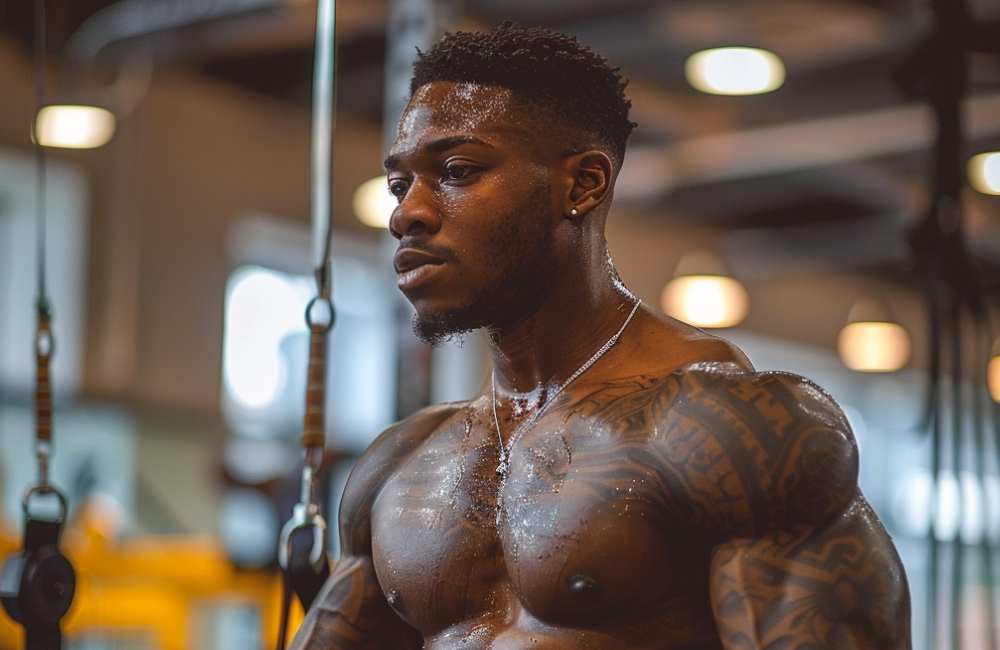Developing stronger arms extends far beyond appearance, serving as a cornerstone of injury prevention and enhanced longevity. Recent research analyzing 25 comprehensive studies reveals that proper strength training reduces sports injuries by one-third and cuts overuse injuries nearly in half, providing compelling evidence for its importance in daily life. The implications of this research extend into everyday activities, from carrying groceries to maintaining independence in later years.
The science of arm strength
Understanding arm strength requires distinguishing between muscle size and functional power. While beginners often experience simultaneous improvements in both areas through novice gains, long-term progress demands strategic training approaches targeting specific outcomes. Research indicates that initial strength gains occur through neural adaptations, improving muscle fiber recruitment and coordination before significant muscle growth begins.
The complex network of arm muscles encompasses biceps controlling elbow bending and forearm rotation, triceps enabling arm extension and shoulder movement comprising 60% of upper arm muscle mass, deltoids facilitating arm lifting and rotation consisting of three distinct heads, and forearms managing grip strength and wrist control containing multiple muscle layers affecting overall arm function.
Seven essential strength builders
- Triceps push-ups create deep muscle engagement through proper hand positioning slightly narrower than shoulder width. Maintaining tucked elbows throughout the movement maximizes tricep activation while protecting shoulder joints
- Flat bench dumbbell curls optimize bicep development through controlled tension requiring precise form with dumbbells hanging straight down initially before curling toward shoulders
- Leaning concentration curls enhance muscle activation through strategic body positioning allowing greater range of motion and muscle fiber recruitment
- Seated overhead presses develop shoulder strength while maintaining stability through controlled movement patterns starting at shoulder height
- Incline bench lateral raises target medial deltoids through specific angle positioning maximizing muscle fiber activation during controlled side movements
- Dumbbell upright rows strengthen side deltoids and upper trapezius muscles through careful attention to form and controlled lifting motions
- Medicine ball throws incorporate explosive power development enhancing functional strength through dynamic movement patterns
Understanding technique importance
Proper form serves as the foundation for strength development, protecting joints and connective tissues from unnecessary stress. Research indicates that mastering movement patterns with lighter weights initially leads to superior long-term strength gains and reduced injury risk. The central nervous system requires approximately 6-8 weeks to fully adapt to new movement patterns, establishing proper motor unit recruitment. This adaptation period proves crucial for developing lasting strength and preventing future injuries.
Protein intake plays a crucial role in strength development, with research indicating optimal intake between 1.6-2.2 grams per kilogram of body weight daily. Strategic nutrient timing, particularly post-exercise protein consumption, supports muscle recovery and strength adaptation. Adequate carbohydrate intake supports training intensity, while maintaining proper hydration enhances performance and recovery. This nutritional foundation provides the building blocks necessary for consistent strength gains.
Recovery optimization
Scientific evidence supports various recovery methods enhancing strength development. Sleep quality significantly impacts strength gains, with research showing 7-9 hours optimal for recovery and adaptation. Proper hydration affects muscle protein synthesis and recovery, while active recovery between training sessions enhances blood flow and nutrient delivery. The balance between training stimulus and recovery determines long-term progress in strength development.
Sustainable strength development requires systematic progression through increasingly challenging movements. Research demonstrates the importance of systematic loading progression, with weekly increases of 2-5% in training load optimizing adaptation while minimizing injury risk. This progressive approach allows proper adaptation of both muscles and connective tissues, ensuring sustainable strength gains over time.
Core connection and stability
Research demonstrates the crucial relationship between core strength and arm function. A stable core provides the foundation for powerful arm movements, enhancing overall strength development and reducing injury risk. Core activation precedes limb movement in functional patterns, requiring integrated training approaches that acknowledge this interconnected relationship. This understanding has revolutionized training approaches, leading to more effective strength development protocols.
Comprehensive injury prevention requires attention to movement screening, proper warm-up protocols, and progressive loading patterns. Training smart requires attention to tendon health, as these crucial connective tissues transfer force between muscles and bones. Common injury sites including shoulders, elbows, and wrists benefit from proper form and progressive loading strategies, emphasizing the importance of systematic training progression.
Future developments
Emerging research continues revealing connections between arm strength and overall health, suggesting increasingly important roles for strength training in maintaining health and function throughout life. Current studies explore relationships between strength training and cognitive function, hormonal optimization, metabolic health, and the aging process. These findings indicate that arm strength development contributes significantly to overall health and longevity.
The comprehensive approach to arm strength development extends beyond simple exercise selection, encompassing technique, recovery, and progression strategies. This holistic view enables sustainable strength development supporting both athletic performance and daily function while reducing injury risk and enhancing quality of life. As research advances, our understanding of effective strength development continues to evolve, providing increasingly effective methods for building and maintaining arm strength throughout life.










